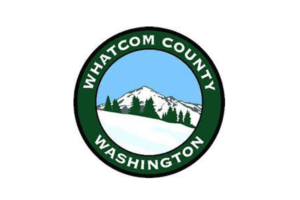When “infrastructure” topped Merriam-Webster’s most significant words of 2021, it signaled more than just a trending term – it marked the beginning of a transformative era in America’s food system. As the federal government poured unprecedented investments into rebuilding our nation’s foundations, the USDA launched an ambitious Food System Transformation framework, targeting four vital areas: production, processing, aggregation, and markets/consumers.
The National Sustainable Agriculture Coalition has spent this year tracking these historic investments through a multi-part blog series exploring key programs and analyzing the policies shaping our food future. As we look ahead, we see a dynamic landscape– some programs are sunsetting, others are expanding, and new initiatives are still taking shape. In September, we dove into the USDA’s Regional Food Business Center (and their Business Builder Grants) and the Healthy Food Financing Initiative (HFFI) Food Access and Retail Expansion Fund.
One program that’s particularly caught our attention is the USDA’s Resilient Food Systems Infrastructure (RFSI) program. We’ve watched with excitement as state awards roll out, celebrating alongside clients whose visions are becoming reality. What makes RFSI unique is its strong emphasis on the middle of the supply chain – those critical infrastructure pieces that connect farmers to consumers. This specialized approach has us thinking: What have we learned about creating infrastructure that genuinely serves our local food systems?
COLLABORATION AND COMMUNITY
The journey from farm to table involves a diverse range of people, businesses, infrastructure, organizations, and agencies. While local food systems connect these elements into a supply chain, they do not automatically function as a unified whole. Advocates of local food systems have spent the last 40 years reimagining how networks can facilitate the connections necessary to build resilient, community-centered networks that prioritize local needs. Communities are increasingly organizing around local issues through local food councils and coalitions to facilitate cross-sector collaboration. With strong leadership and facilitation, these cross-sectoral groups can identify the intersections between the food system and the wide range of related fields, from healthcare and transportation to workforce development and policy.
As communities dig into the local challenges and opportunities, many groups engage in formal food system assessment and planning to support a holistic and community-driven approach to mapping out a plan for their community. These processes can surface data, increase diverse stakeholder input, build consensus, and create clear recommendations that can inform transformational projects, including those focused on infrastructure.
This combination of community-driven recommendations and a network of food-focused individuals is pure gold for food businesses investing in infrastructure. By engaging with diverse networks and forging partnerships outside their immediate circle, they gain invaluable social capital and deep insights into their community’s true needs. The most powerful collaborations often emerge from unexpected places – when a farmers market partners with healthcare providers or a food hub collaborates with workforce development programs, new possibilities emerge. These diverse connections often inspire a powerful shift toward multi-use Community Food Centers – shared spaces where businesses collaborate, communities access vital services, and infrastructure catalyzes lasting resilience.
Read about how NVA partnered with The City of Flagstaff on a comprehensive food system assessment for the five northern counties of Arizona, examining all sectors of the food system from production to disposing and composting. The assessment uses a mix of research methods to tell a complete story of the food system in Northern Arizona and lay the foundation for the Food Action Plan now underway.
POWER OF PROCESS
In the USDA “Learning from Food Hub Closures” report, the first lesson learned stated, “There is no mission without the margin.” Too often, well-intentioned organizations learn the hard way that a worthy mission focused on sustainability and systems change doesn’t automatically create a sustainable operation.
Building successful local food infrastructure requires a delicate balance: it must be community-centered, follow proven business practices, and adapt to unique local conditions. The key is starting with deep community engagement. Through meaningful partnerships and local input, projects can develop services that truly match market demand and complement existing resources.
This groundwork sets the stage for a thorough feasibility assessment. While traditional market data has its limits in local food systems, rich insights emerge from community partnerships and on-the-ground knowledge. Combined with sophisticated mapping tools, analysts can pinpoint ideal locations and identify existing assets to build upon.
The journey doesn’t end there. A project must clear multiple hurdles – technical feasibility, financial viability, and management capacity. Tools like our readiness rubric and the MarketSizer® and HubSizer® help project managers navigate these challenges. When a project shows promise, the focus shifts to refining business plans, operational models, and financial frameworks that will carry the vision from blueprint to reality.
Read about how New Venture Advisors partnered with Aspen Community Foundation, LIFT-UP, Pitkin County Department of Human Services, and Pitkin County Open Space and Trails to design a regional food infrastructure development strategy that will be responsive to the needs and aspirations of the community.
VALUE OF LEADERSHIP
Great infrastructure is only as strong as the team that runs it. In the local food sector, where best practices are still evolving and margins are tight, finding leaders who combine both technical expertise and visionary leadership can be as challenging as it is crucial.
These facilities need more than just managers – they need captains who can navigate complex waters. The ideal leaders must master multiple roles: developing robust business plans, securing capital, building trust with local producers and buyers, managing seasonal workflows, and inspiring skilled teams. Most importantly, they must possess an unwavering passion for the mission and the ability to rally their community behind it.
Whether working solo or through a food system council, leaders who blend business acumen with community engagement are the secret ingredient that transforms good infrastructure into great food systems. These visionaries turn buildings and equipment into vibrant hubs of local food innovation, proving that infrastructure is only as resilient as the people who steward it.
INFRASTRUCTURE’S STAYING POWER
As the last several states complete their RFA process under the Resilient Food System Infrastructure program, we look forward to seeing how communities reimagine their local food system and utilize infrastructure to grow their capacity.
Entering our 15th year and having completed hundreds of feasibility studies, the New Venture Advisors team is still amazed at the many ways our clients are imagining infrastructure solutions. Check out our case studies for good inspiration.
Photo by Christi Bode Skeie, courtesy of San Luis Valley Foods Coalition



